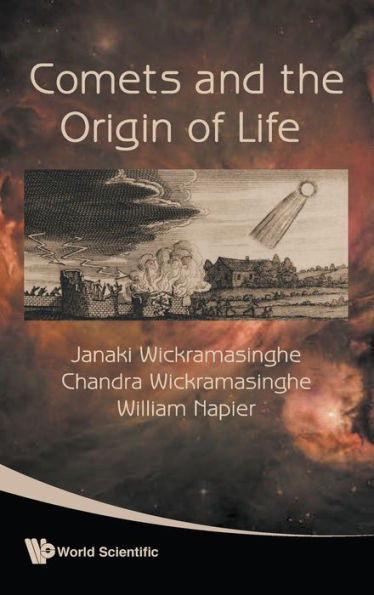Table of Contents
Preface v
1 Overview 1
1.1 Introduction 1
1.2 Cometary Panspermia 3
1.3 History of Panspermia 5
1.4 The Ultraviolet Problem 8
1.5 Resilience of Bacteria 9
1.6 Extremophiles 10
1.7 The Discovery of Organics in Cosmic Dust 11
1.8 Comets 13
1.9 The Origin of Life 14
1.10 Modern Advances 15
1.11 Protoplanetary Nebulae and Extra-solar Planetary Systems 16
1.12 Habitable Zone 20
2 Cosmic Dust and Life 23
2.1 Introduction 23
2.2 Constraints on Composition 25
2.3 Extinction by Spherical Particles 27
2.4 The Interstellar Extinction and Bacterial Dust 29
2.5 Infrared Evidence 37
2.6 Comet Dust and Biomaterial 40
2.7 The Identification of PAH and Biological Aromatics 43
2.8 Other Spectral Features 48
2.9 Fluorescence 50
2.10 The Origin of Organic Molecules in Space 53
2.11 Direct Analysis of Comet Dust 56
2.12 Capture of Comet Dust in the Stratosphere 58
3 The Origin of Comets 63
3.1 The Galactic Disc 64
3.2 The Formation of Stars 66
3.3 Planet Formation 69
3.4 The Formation of Comets 71
3.4.1 The structure of the comet population 71
3.4.2 Cornel chemistry 75
3.4.3 Cometary origin inferred 76
3.4.4 Other ideas about comet origins 79
4 Comets in the Galactic Environment 81
4.1 The Mechanism of Lithopanspermia 81
4.1.1 Transferring boulders between planetary systems 82
4.1.2 Erosion of ejected boulders 83
4.2 The Formation Sites of Comets 86
4.2.1 Origin in the planetary region 87
4.2.2 Origin in molecular clouds 90
4.2.3 Exocomets 93
4.3 The Sun's Orbit in the Galaxy 94
4.3.1 The effect of the vertical Galactic tide 95
4.3.2 Flux modulation due to the Sun's vertical motion 97
4.3.3 Perturbations by molecular clouds 100
4.3.4 The effect on Oort cloud comets 101
4.4 The Impact Cratering Record 105
4.4.1 Impact melts in large craters 109
4.4.2 Galactic periodicity 111
5 Dark Comets: A Link to Panspermia 117
5.1 A Mass Balance Problem 118
5.1.1 Disintegration to dust 119
5.1.2 Dark comets 129
5.1.3 Super-dark comets 130
5.2 The Impact Hazard and the Panspermia Connection 134
6 Expulsion of Microbes from the Solar System 137
6.1 Introduction 137
6.2 Expectations from Impact Cratering Mechanisms 137
6.3 Mechanisms for Ejection and Fragmentation of Boulders 140
6.4 β-Meteoroids 141
6.5 Protective Shielding in Small β-Meteoroids 142
6.6 Carbonisation of the Surface Layers of Grains 143
6.7 Radiation Pressure Effects 144
6.7.1 Ratio of radiation pressure to gravity 145
6.7.2 Results and dynamical considerations 147
6.8 Surviving the Hazards of Galactic Cosmic Rays 148
6.9 How Comets Distribute Life 153
6.10 Dispersal of Life by Impacts 154
7 Liquid Water in Comets 157
7.1 Introduction 157
7.2 Primordial Melting 159
7.3 Evidence of Present-day Melting 163
7.4 Results from Deep Impact 169
7.5 Frozen Lake Surfaces 178
7.6 Microbial Fossils in Carbonaceous Meteorites 180
8 Origin of Life 183
8.1 Preamble l83
8.2 Cometary Interiors as Incubators of Early Life 188
8.3 Comparison with a Terrestrial Origin of Life 189
9 Expanding Horizons of Life 193
Bibliography 201
Index 213




